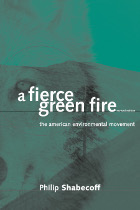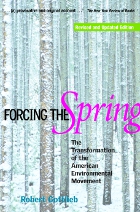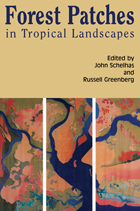3 start with F start with F

In A Fierce Green Fire, renowned environmental journalist Philip Shabecoff presents the definitive history of American environmentalism from the earliest days of the republic to the present. He offers a sweeping overview of the contemporary environmental movement and the political, economic, social and ethical forces that have shaped it. More importantly, he considers what today's environmental movement needs to do if it is to fight off the powerful forces that oppose it and succeed in its mission of protecting the American people, their habitat, and their future.
Shabecoff traces the ecological transformation of North America as a result of the mass migration of Europeans to the New World, showing how the environmental impulse slowly formed among a growing number of Americans until, by the last third of the 20th Century, environmentalism emerged as a major social and cultural movement. The efforts of key environmental figures -- among them Henry David Thoreau, George Perkins Marsh, Theodore Roosevelt, Gifford Pinchot, John Muir, Aldo Leopold, David Brower, Barry Commoner, and Rachel Carson -- are examined. So, too, are the activities of non-governmental environmental groups as well as government agencies such as the EPA and Interior Department, along with grassroots efforts of Americans in communities across the country. The author also describes the economic and ideological forces aligned against environmentalism and their increasing successes in recent decades.
Originally published in 1993, this new edition brings the story up to date with an analysis of how the administration of George W. Bush is seeking to dismantle a half-century of progress in protecting the land and its people, and a consideration of the growing international effort to protect Earth's life-support systems and the obstacles that the United States government is placing before that effort. In a forward-looking final chapter, Shabecoff casts a cold eye on just what the environmental movement must do to address the challenges it faces.
Now, at this time when environmental law, institutions, and values are under increased attack -- and opponents of environmentalism are enjoying overwhelming political and economic power -- A Fierce Green Fire is a vital reminder of how far we have come in protecting our environment and how much we have to lose.

This revised edition extends the groundbreaking history and analysis of Forcing the Spring into the present day. It updates the original with important new material that brings the book's themes and arguments into the 21st century, addressing topics such as: the controversy spawned by the original edition with regard to how environmentalism is, or should be, defined; new groups and movements that have formed in the past decade; change and development in the overall environmental movement from 1993 to 2004; the changing role of race, class, gender, and ethnicity in today's environmentalism; the impact of the 2004 presidential election; the emergence of "the next environmentalism."
Forcing the Spring, Revised Edition considers environmentalism as a contemporary movement focused on "where we live, work, and play," touching on such hot-button topics as globalization, food, immigration, and sprawl. The book also describes the need for a "next environmentalism" that can address current challenges, and considers the barriers and opportunities associated with this new, more expansive approach.
Forcing the Spring, Revised Edition is an important contribution for students and faculty in a wide variety of fields including history, sociology, political science, environmental studies, environmental history, and social movements. It also offers useful context and analysis for anyone concerned with environmental issues.

This volume brings together world-renowned scientists and conservationists to address the biological and socio-economic value of forest remnants and to examine practical efforts to conserve those remnants. An outgrowth of a year-long study by the policy program at the Smithsonian Migratory Bird Center, Forest Patches in Tropical Landscapes provides a broad overview of theory and practice, and will help foster both interdisciplinary research and more effective approaches to tropical conservation and development.
READERS
Browse our collection.
PUBLISHERS
See BiblioVault's publisher services.
STUDENT SERVICES
Files for college accessibility offices.
UChicago Accessibility Resources
home | accessibility | search | about | contact us
BiblioVault ® 2001 - 2024
The University of Chicago Press









